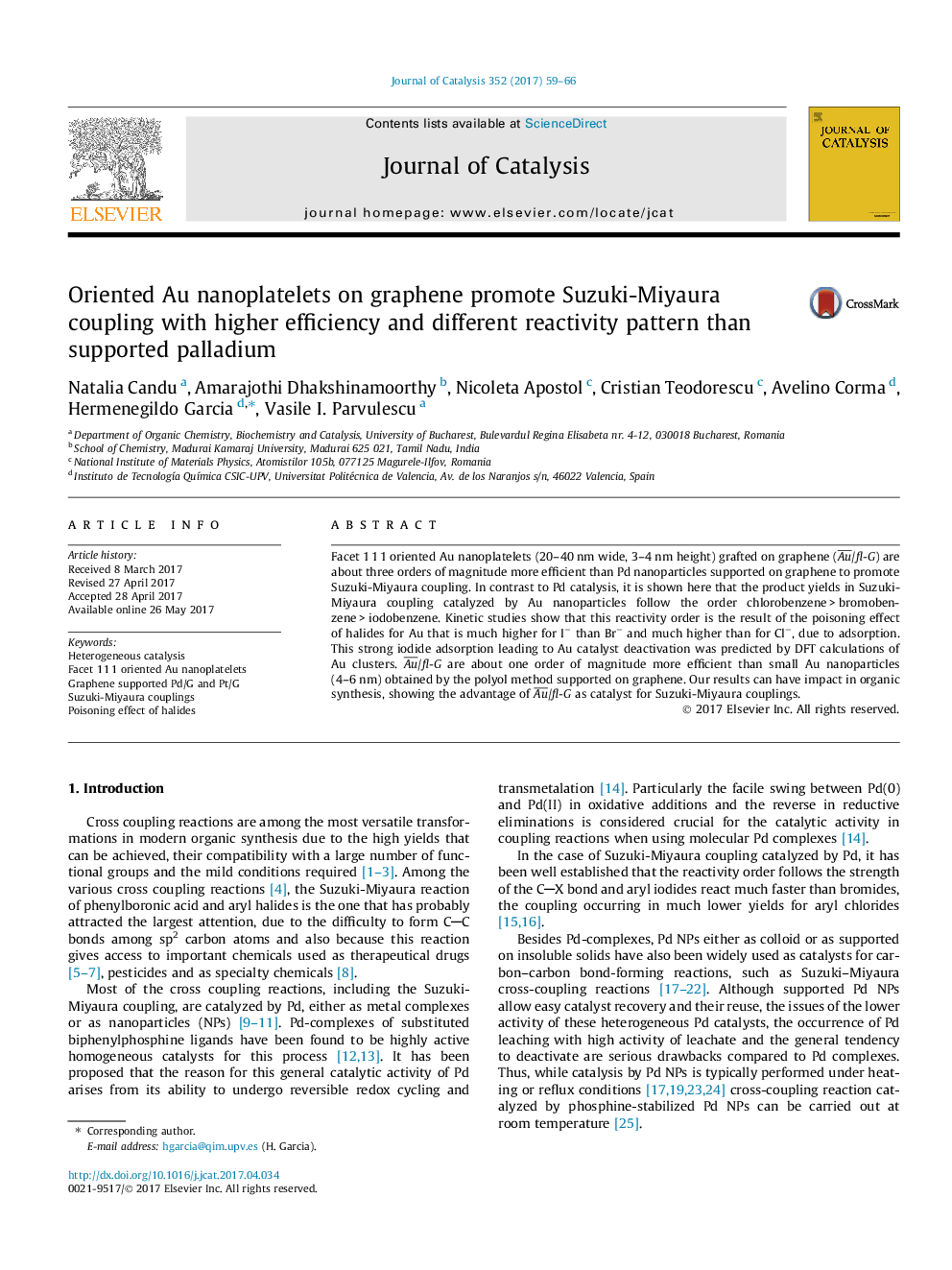| کد مقاله | کد نشریه | سال انتشار | مقاله انگلیسی | نسخه تمام متن |
|---|---|---|---|---|
| 6455336 | 1419757 | 2017 | 8 صفحه PDF | دانلود رایگان |

- Kinetic studies showed that the reactivity order is the result of the poisoning effect of halides for Au.
- The poisoning effect of Au is much higher for Iâ than Brâ and much higher than for Clâ, due to adsorption.
- This strong iodide adsorption leading to Au catalyst deactivation was predicted by DFT calculations of Au clusters.
- Auâ¾/fl-G are about one order of magnitude more efficient than small Au nanoparticles (4-6Â nm) obtained by the polyol method supported on graphene.
- Auâ¾/fl-G are about three orders of magnitude more efficient than Pd nanoparticles supported on graphene.
Facet 1 1 1 oriented Au nanoplatelets (20-40 nm wide, 3-4 nm height) grafted on graphene (Auâ¾/fl-G) are about three orders of magnitude more efficient than Pd nanoparticles supported on graphene to promote Suzuki-Miyaura coupling. In contrast to Pd catalysis, it is shown here that the product yields in Suzuki-Miyaura coupling catalyzed by Au nanoparticles follow the order chlorobenzene > bromobenzene > iodobenzene. Kinetic studies show that this reactivity order is the result of the poisoning effect of halides for Au that is much higher for Iâ than Brâ and much higher than for Clâ, due to adsorption. This strong iodide adsorption leading to Au catalyst deactivation was predicted by DFT calculations of Au clusters. Auâ¾/fl-G are about one order of magnitude more efficient than small Au nanoparticles (4-6 nm) obtained by the polyol method supported on graphene. Our results can have impact in organic synthesis, showing the advantage of Auâ¾/fl-G as catalyst for Suzuki-Miyaura couplings.
105
Journal: Journal of Catalysis - Volume 352, August 2017, Pages 59-66